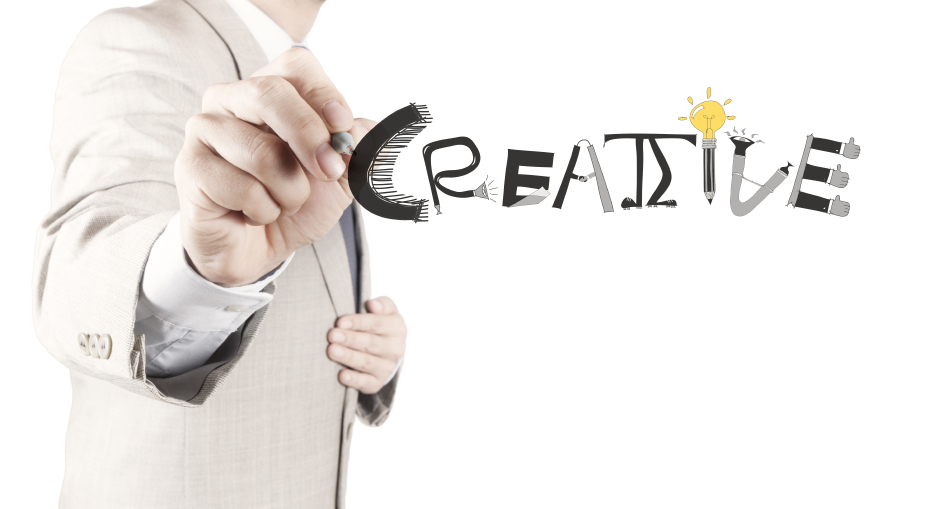The Idiot Savant's Guide to Accelerating Culture Change

Imagine that you have been tasked with the challenge of addressing the need for "culture change" within your team, department, or entire organization. I'm assuming you didn't go to graduate school in "culture change" and that you also have a lot of other stuff on your plate. Correct? I thought so. Yours is a curious challenge that will require major clarity on the front end, skillful facilitation in the middle, and meaningful follow-up on the back end.
"Corporate culture change" is a head banger. It's easy to talk about, but hard to pull off. To increase your odds of success, lower your stress, and help you navigate your way through the maze, here are seven points to consider -- a homeopathic dose of what I've learned since 1987, providing various innovation sparking services to a whole bunch of forward thinking companies. Ready? Probably not, but keep reading anyway.
1. ENSURE SENIOR TEAM ALIGNMENT/SUPPORT: Are your key stakeholders on board about the culture change effort? Are they all on the same page? Are they willing to make a different kind of effort in order to raise the odds of the effort sustaining over time? Too often, "culture change" is a can kicked down the road. Senior Leaders, if they are really serious about seeing meaningful change, need to step up and OWN the effort more than they currently do. How this translates into action, is TBD, of course, but the effort will not sustain if your Senior Leaders are simply delegating their responsibility to their direct reports. Here's my rant on the topic.

2. LISTEN TO YOUR WORKFORCE. GIVE THEM A CHANCE TO WEIGH IN: The more the "rank and file" gets a chance to share their insights, needs, and perceptions, the better chance you have of succeeding. People usually take more responsibility for a goal/vision/challenge if they have been consulted on the front end. Also, your Senior Leaders will likely learn a lot more about the current reality of the situation if they provide a way for the people on the front lines to speak up and be heard. This can happen via focus groups, one-on-one interviews, or online polling. Here's how we do it.
3. CLARIFY YOUR HOPED FOR OUTCOMES: Imagine that your culture change efforts are a resounding success. How will you know? What will be different? In what ways will you quantify progress? The clearer you and Senior Leaders are about the end game, the more effective the process of getting there will be.
4. FRAME YOUR CHALLENGE ACCURATELY: Can you phrase your goal/challenge/problem as a question that starts with the words "How can we?" If you can't, take some time to get the right question. Then check in with other key stakeholders and see if your HOW CAN WE question is the same one that they think is the issue. If not, tawk amongst yourselves until you can agree on what the REAL question is. And, if there is more than one question/challenge/problem on the table, so be it.
5. DECIDE ON THE RIGHT MIX OF PEOPLE TO MEET: If you have 150 people in the soup, what are the sub-groups that make the most sense to be participate in the same, real time session? All 150 at once? Two sessions of 75? Three sessions of 50? Five sessions of 30? Size matters. So does the mix of people in the room. Assuming that all groups go through the same process, what groupings of people make the most sense -- and over what period of time?
6. CLARIFY YOUR FOLLOW UP STRATEGY: If you want your culture change efforts to sustain, start thinking about how your real-time sessions are going to be followed up. Will people be working in small teams on specific projects? Will there be any accountability? Will selected managers be expected to coach and/or monitor/acknowledge progress? Does it make any sense to offer people an online innovation-sparking curriculum? Also, it may make sense to establish an Innovation Council to keep things moving forward.
7. IDENTIFY YOUR BUDGET: Ah... the "B" word! How much money does your company have to invest in your TBD change process? This number will determine which of the above-mentioned variables get attended to or not -- and how deeply. NOTE: These days, I use the Gordian Knot One Sword Stroke approach, instead of endless proposal writing -- wasting your time and mine, here's an alternative approach: You tell me what your budget is. I tell you what Idea Champions can do within those budgetary constraints. Simple.
What our clients say
56 reasons why most corporate innovation efforts fail
Comic relief
Posted by Mitch Ditkoff at 02:53 PM | Comments (0)
November 28, 201712 Ways to Make Bad Decisions
 There are three things that astound me about most organizations: The cro-magnon way performance reviews are done; the pitiful way brainstorm sessions are run and; the voo doo way decisions are made.
There are three things that astound me about most organizations: The cro-magnon way performance reviews are done; the pitiful way brainstorm sessions are run and; the voo doo way decisions are made.
What follows is an elaboration of the third -- 12 common phenomena that contribute to funky decision making. As you read, think of the teams you work most closely with, which of these behaviors describes them, and what you can do to change the game.
1. Selective Search for Evidence: Gathering facts that support pre-determined conclusions, but disregard other facts that support different conclusions.
2. Premature Termination of Search for Evidence: Accepting the first alternative that looks like it might work.
3. Inertia: Being unwilling to change old thought patterns.
4. Selective Perception: Prematurely screening out information not assumed to be useful.
5. Wishful Thinking: Wanting to see things in a positive light.
6. Recency Effect: Putting undue attention on recent information and experience while minimizing the value of information collected in the past.
7. Repetition Bias: Believing what's been stated the most often and by the greatest number of sources.
8. Anchoring and Adjustment: Being unduly influenced by initial information that shapes your view of subsequent information.
9. Group Think: Conforming to peer pressure or the opinions of the majority.
10. Source Credibility: Rejecting input from sources prematurely judged to not be credible (or not "cool" or "in sync with the way you do business.")
11. Attribution Asymmetry: Attributing success to your team's abilities and talents, but attributing failures to bad luck and external factors.
12. Role Fulfillment: Conforming to the decision making expectations others have of someone in your position.
In what ways might you improve your team's decision making process?
Idea Champions
MitchDitkoff.com
Posted by Mitch Ditkoff at 11:28 PM | Comments (1)
November 25, 2017VALIDATION
Ever feel invisible, unappreciated, unacknowledged? Ever feel the need to be seen, recognized, and validated? (Or maybe this is more of an issue for other people in your life: your friends, family, or co-workers.) No matter where you fit into this phenomenon, methinks you will enjoy this thought provoking video.
Thanks to Fazeel Arain for the heads up!
Idea Champions
Posted by Mitch Ditkoff at 10:35 AM | Comments (0)
November 18, 2017Understand What Lean Six Sigma Is Without Getting a Huge Headache

Ten years ago, my company was a vendor to a Fortune 100 company devoted to SixSigma. So devoted, in fact, that they required all of their vendors to take a two-day day Six Sigma training. While I never liked thinking of myself as a "vendor", I took the course. My experience of it? Like taking a geometry test while doing my taxes in a DMV office.
Yes, during those two days, I realized there were lots of useful tools to learn to make my business more effective. But I didn't learn them. Nor did I ever apply a single one of those tools on the job. The lunch buffet was memorable, but that was about it.
Fast forward to a few months ago. That's when I discovered a company who changed the way I thought about all this stuff. With a light touch, a deep understanding of how people learn, and a large dose of humanity, they have found a way to make the essence of SixSigma accessible, relatable, and enjoyable to learn. While they totally get that process is king, they also get that it is people who use processes and unless those people are actually learning process improvement methods in a memorable way, nothing much will change.
GoLeanSixSigma's online trainings draw on 25 years of success helping the world's leading organizations create happier customers and save millions of dollars. Click here if you are curious and want to kick their proverbial tires. For free. As in nada, zero, zippo, zilch.
Just for fun, here's the lyrics to a funny blues song I wrote about Six Sigma in an attempt to gain back my humanity after my first exposure to the SixSigma world.
The difference between Six Sigma and Lean Six Sigma
Posted by Mitch Ditkoff at 08:07 AM | Comments (0)
November 17, 2017On Being a Better Listener

Good article from Fast Company on the emotional intelligence required to be a better listener.
If you want to innovate, listen more
24 quotes on good communication
Non-judgmental listening
Posted by Mitch Ditkoff at 06:13 PM | Comments (0)
November 16, 2017Innovation and Indigenous Wisdom

Here's a wonderfully, innovative project happening in San Miguel de Allende, Mexico -- a groundbreaking event being planned for the coming summer that celebrates the indigenous wisdom of the Americas. Click here for the just launched GoFundMe campaign by the Founder of the project, Evelyne Pouget. During the next nine months, the Heart of Innovation will post periodic updates about this most inspired event, including excerpts of interviews with tribal elders, Concheros dancers, project coordinators, and children.
Posted by Mitch Ditkoff at 11:17 PM | Comments (0)
How to Manage Distractions
Great article in Fast Company on how to manage distractions. Not that YOU ever get distracted, of course. Wait... I just got a text from my cousin... I'll..um...er... finish this blog post later...
MitchDitkoff.com
Idea Champions
Posted by Mitch Ditkoff at 02:24 PM | Comments (0)
November 15, 2017Everything You Need to Know About Brainstorm Facilitation

Voila! Here are 13 of Idea Champion's brief, upbeat, entertaining videos on the art and science of brainstorm facilitation.
Our brainstorming website
What our clients say
A sampling of case studies
Posted by Mitch Ditkoff at 12:32 PM | Comments (0)
Storytelling Webinar, with Mitch Ditkoff, on November 22th
Please join me (Mitch Ditkoff) for a 60-minute "Power of Storytelling in Business" webinar -- hosted by PatSnap -- on Wednesday, November 22nd. Click here to register. It's free.
If you are looking for simple ways to leverage the power of storytelling in the workplace, this will be a good use of your time. Upbeat. Authentic. And entertaining, too. "He that tells the stories, rules the world." - Hopi Indian Saying
My book on storytelling
My blog on storytelling
16 brief videos on storytelling
Posted by Mitch Ditkoff at 10:14 AM | Comments (0)
November 14, 2017A New Facebook Group for Aspiring Innovators and Cultural Creatives

After 28 years of being an "innovation provocateur" for hundreds of forward thinking organizations around the world, one thing has become very clear to me: most people with BIG IDEAS usually end up derailed somewhere along the way.
Simply put, they lose steam, lose heart, and lose their way. The result? No result.
This is why I have launched "Being a Creator on Planet Earth" -- a new Facebook group designed to help aspiring innovators, from every walk of life, manifest their big, bold, beautiful ideas. The content? Inspired quotes by creative icons, innovation-sparking articles, mind-opening videos, stories, best practices, and a sprinkling of tips, tools, and techniques. Juicy. Engaging. Fun.
Three minutes a day is all it takes. Sometimes, less than 60 seconds.
The Facebook Group
The creator of the Facebook Group
50 quotes on possibility
Posted by Mitch Ditkoff at 08:21 AM | Comments (0)
November 11, 2017WANT TO LEAD A GOOD MEETING? Begin with Facilitative Presence!

Since 1987, I have been facilitating a wide variety of high octave business meetings for just about every industry on planet earth. These meetings have been variably referred to as leadership development programs, creative thinking trainings, innovation workshops, team building off sites, brainstorming sessions, strategic planning pow wows, senior team retreats, annual conferences, and business simulations.
Along the way, as you might imagine, I've developed quite a repertoire of approaches, methods, processes, tools, techniques, and skills to help me get the job done. All of them have worked if delivered in the right way at the right time.
But when push comes to shove (as it often does), the single most effective meeting facilitation ability I've discovered is the most mysterious one of all: presence. Yes, presence, -- the ability to be totally in the moment, no matter what the collective mood, mindset, or drama is of the people in the room.
Presence, I have come to realize, is the doorway to all things meaningful -- the bridge between what is and what can be.

Easier said than done, however, especially when you, as the "meeting leader", find yourself in a room full of strong-willed, highly opinionated people who, more often than not...
1. Are not there of their own free will.
2. Represent competing agendas.
3. Don't always like or trust each other.
4. Are wondering why they aren't leading the meeting.
5. Have a hard time letting go of control.
6. Don't want to rock the boat.
7. Have a long history of funky meeting behaviors.
8. Are concerned that the meeting will actually accomplish its goal, leading to the uncomfortable moment when they will be expected to volunteer for a project they have no time to deal with.
9. Keep sneaking peaks at their cell phones.
10.Have major issues with senior leadership (even if they are senior leadership).
Facilitative presence -- the ability to let go of what just happened, what hasn't happened, and what might happen in service to what is happening is the difference-maker.
Presence opens up space and time. Presence opens up possibility. Presence enables a kind of organizational Red Sea to part so that everyone in the room, no matter what their social style, title, or astrological sign can take a fresh look at what needs to be addressed right then and there.
Presence is one of the major pre-conditions for change. It requires that the meeting facilitator has an uncluttered mind, trust in their own instincts, and a relentless fascination for group process.
If you like, think of presence as a kind of Venn diagram, the intersection where improv, planning, and curiosity meet.

The good news? There are many ways a meeting facilitator can get to the space of presence. The simplest way is similar to what some people, these days, are refering to as "mindfulness". Others call it by different names: "witnessing", "centering", "non-attachment", or "the fruits of meditation."
Ultimately, it doesn't matter what you call it. What matters is that you experience it so you can be a conduit/channel for a disparate group of people going beyond their individual differences to get to higher ground.
Idea Champions
Our workshops and trainings
One way to establish presence
The DNA of the meetings we run
Posted by Mitch Ditkoff at 01:43 PM | Comments (0)
November 08, 2017VOICE AMERICA RADIO INTERVIEW with Mitch Ditkoff on Fostering a Culture of Innovation

Here's everything you wanted to know about how to foster a culture of innovation in your organization -- a 56-minute VOICE AMERICA radio interview with Mitch Ditkoff, Co-Founder and President of Idea Champions and the writer of this blog. OK. maybe it's not everything you wanted to know, but at least it's trending in that direction. (Please forgive me for using the word "trending". I don't like that word. It just kind of slipped out).
The main thing? Click the link above and listen to the interview. Good food for thought -- something you might want to forward to you manager or other senior leaders in your company -- especially if they are claiming some interest in the "innovation thing."
Idea Champions
Culture of Innovation workshop
MitchDitkoff.com
Posted by Mitch Ditkoff at 01:54 AM | Comments (0)
November 05, 2017Beyond Sage on the Stage Consulting

To borrow a phrase from the radically changing world of healthcare -- the essence of organizational culture change can be boiled down to three words: "Physician heal thyself"-- as in companies restoring optimum health to their enterprise from the inside out.
While many patients, anxious about their well-being, simply want the doctor to tell them what to do, that is, ultimately, a prescription for failure. Sustainable change only happens when people take full responsibility for their own condition.
Being told to "take two aspirins and see me in the morning" by someone with a framed medical school degree above their desk may be comforting in the short-term, but it completely misses the point. It's a paradigm whose time has come and gone.
The long and disappointing history of "change initiatives" bears this out. The data is there. 70% of them fail. And the main reason why 70% of them fail is because most organizations who enter into the culture change process rely too much on outside "experts" who, invariably treat their "patients" as someone incapable or unwilling to heal themselves.
Does the phrase "co-dependence" ring a bell?
If you expect your organization to make the kind of changes required for it to succeed, long-term, know this: the outside consultant as prescriber model (referred to in the OD world as "sage on the stage") has got to go. It will not work.
We understand, of course, that your company's Senior Leaders need some kind of roadmap or blueprint to help them navigate their way forward. They are not about to embrace an "organic process" that does not frame out the strategies and tactics required to help their company become an agile, innovative, best-company-to-work for enterprise.
This we understand. And, we will be happy to provide you with a blueprint.
But please understand this: embedded into the DNA of our blueprint is the highly collaborative process of co-creating the blueprint with you, your Design Team, and selected Senior Leaders.

We are not prescribing two aspirins. We are not asking you to call us in the morning so we can prescribe two more aspirins or a tourniquet. We are engaging you in a dynamic, interactive, collaborative partnership to ensure that the effort made is genuine, robust, and sustainable.
And that only happens when a critical mass of people in your organization are deeply engaged in the change process from the very beginning. No aspirins required.
This is the primary difference between our approach and traditional "sage on the stage" consulting.
And while we're at it, here's another way to think about the choices before you -- vacations.
Some people like to go on Safaris. Some people like to go to 5-Star hotels.
On Safari, everything is not always neat and clean. Conditions change. Weather shifts. The road is often bumpy. There are unknowns and surprises that require flexibility, adaptability, and in-the-moment decision making.
In a 5-Star hotel, everything is buttoned down, pre-programmed, and effortless. Indeed, that is what 5-Star Hotel customers are paying for -- for someone else to do the work, someone else to cook the food, someone else to make the bed. We get it.
But a large scale, organizational change effort is not a 5-Star Hotel
It is more like a Safari. And while there are definitely best practices to abide by and time-tested principles to be guided by, success cannot be prescribed by a third party -- especially if you are committed to internalizing the mindset, skills, tools, and processes, needed for you organization to make this their own, replicable process in the years to come.
Make sense?
Idea Champions
What we do
What our clients say
Posted by Mitch Ditkoff at 12:44 PM | Comments (1)
November 04, 2017The Growing Relationship Between Storytelling and Lean Six Sigma

These two Lean Six Sigma practitioners walk into a bar. Wait... no... I mean three Lean Six Sigma practitioners walk into a bar. The first is wearing pink tights. The second is mumbling something about a fishbone diagram. The third is just back from a 10-day vacation in Croatia. Now that I have your attention, click here for a rousing 60-minute webinar on the relationship between storytelling, innovation, and Lean Six Sigma. The interviewer? The fabulous Elisabeth Swan, Managing Partner of GoLeanSixSigma. The interviewee? Mitch Ditkoff, President of Idea Champions and author of Storytelling at Work. Enjoy!
Posted by Mitch Ditkoff at 04:16 AM | Comments (0)
November 03, 2017A Crash Course on Leadership

Here's pretty much everything you need to know about being a good leader -- whether you are the CEO of a Fortune 500 company or the Director of a 5-person non-profit. Ready?
Connect: If you want to lead people, you will need to begin by connecting with them, as in develop some kind of trusting relationship. No one is going to follow a leader they haven't bonded with. You may get compliance. You may even get cooperation. But you won't get commitment. What can you do to more powerfully connect with the people you are working with?
Enable: The key to being a successful leader is finding a way to empower the people who have been attracted to your business or project. If people are intrinsically motivated and have room to move, they will create magic. If not, they will merely go through the motions. How can you enable the people you are working with to be self-starting and inspired to give their best?
Listen You might be the leader, but that does not mean that you know everything. Indeed, you will need to learn a lot if you expect to succeed in your leadership role. The simplest way to learn is to listen. Identify the people who know something you don't and listen to them. And, even if you think you know more than others, listen anyway. If people are going to give their best, they need to know that someone is listening. And that someone is you. What can you do, this week, to become a better listener?
Respect: No matter what role anyone in your organization or volunteer group is playing, they are a human being first. And human beings have a gigantic need to be respected. Not just for what they do, but for who they are... and how they feel... and what ideas they are bringing to the table. In what ways can you express your respect for the people you are leading? Cue Aretha Franklin.
Illustration: gapingvoid
Idea Champions
One of our leadership trainings
Our Innovation Reality Check service
Posted by Mitch Ditkoff at 10:24 AM | Comments (0)
November 02, 2017The Best Definition of Creativity?

If you google the phrase definitions of creativity, guess how many definitions show up? 135 million! That's right, 135 million. And so, if you are looking for THE definition, give up now. You won't find it. It doesn't exist. What does exist is mucho people's attempts to define creativity -- definitions, by the way, that are influenced by their particular world view, expertise, profession, assumptions, mindset, nationality, and language skills.
That being said, it is still a useful exercise to zero in on a definition that floats your boat -- especially if you are charged with the responsibility of helping your team, department, organization, or own lone-wolf self become more creative.
Towards that end, what follows are 15 definitions I have curated on your behalf. Some are culled from the work of people whose names you will recognize. Some are from complete unknowns. It doesn't matter in the least. What matters is your willingness to think more deeply than usual about this fascinating topic and that you find (or create) a working definition for yourself to get the party started. Ready?
Dictionary.com: "The ability to transcend traditional ideas, rules, patterns, and relationships."
Rollo May: The process of bringing something new into being -- something that brings to our awareness what was previously hidden and points to new life."
Maria Popova: "The ability to connect the seemingly unconnected."
Roger van Oech: "Imagining familiar things in a new light. Digging below the surface to find previously undetected patterns and find new connections between unrelated phenomena."
Daniel Pink: "Giving the world something it didn't know it needed."
Elizabeth Gilbert: "The strange partnership between a human being's labor and the mystery of inspiration."
Henry Miller: "The occurrence of a composition which is both new and valuable."
Carl Rogers: "The emergence of a novel, relational product growing out of the uniqueness of the individual."
Mihaly Csikszentmhalyi: "An idea, act, or product which changes an existing domain or transforms an existing domain in a new way."
Bernadette: Jiwa: "Tapping into your soul and your intuition and allowing them to guide you what to make."
Michael Grybko: "An idea that is novel, good, and useful. Making connections between different ideas to solve a new problem."
Danny Sullivan: "Building universes out of nothing."
David Merman Scott: Seeing patterns that others don't and effectively communicating them.
Scott Godin: "This might not work."
God: "Let there be light."
The commonalities above? Bringing something new into existence. Transcending existing norms. Going beyond the status quo. Making new connections. Seeing unseen patterns. Tapping into inspiration and intuition. Using your imagination in fresh ways. Adding value to the lives of others.
For the moment, think of creativity as a two-sided coin. One side of the coin is all about the WHAT -- as in the product, service, or deliverable you are birthing. The other side of the coin is all about the HOW -- as in what you need to do in order to birth something new and brilliant in the world.
25 awesome quotes on creativity
Idea Champions
Posted by Mitch Ditkoff at 06:11 PM | Comments (0)
















